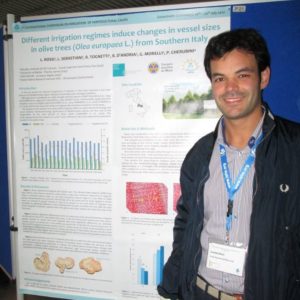Lorenzo Rossi is a former post-doc of Dr. Ma’s Laboratory and, currently he is a post-doc in Dr. Burken’s Laboratory at Missouri S&T.
He is actually involved in several research projects focusing on how cultivated plants react to engineered nanoparticles, heavy metals and other environmental stressors (i.e., salinity and drought). Particularly, he is investigating how different species modify their physiology and anatomy in response to emerging contaminants. In fact, the rapid advancement of nanotechnology has been accompanied by increasing environmental contamination by engineered nanoparticles (ENPs), with agricultural soil as an important sink. Meanwhile, several abiotic stresses also affect plant uptake of ENPs. Therefore, understanding the interactions of co-present ENPs and heavy metals, drought or salinity (common sources of abiotic stress) is critical to gain insights into the accumulation of these contaminants in the ecosystem. Results revealed that cerium oxide can be transmitted through several of Brassica rapa (Ma et al., 2015 Env Science & Tech; Maet al., 2016 NanoImpact), leading to severe oxidative stress on cultivated plants and overall on the ecosystem. Moreover, he demonstrated that cerium oxide nanoparticles can alleviate the salt stress in canola by enhancing photosynthesis mechanism (Rossi et al., 2016 Env. Pollution), showing a potential beneficial effect of ENPs on the environment. However, he also revealed that heavy metals and cerium oxide nanoparticles led to anatomical and physiological changes in root anatomy and plant physiology in several cultivated species (Rossi et al., 2017 Environmental Pollution; Cao et al., 2017 Environmental Science: Nano), altering the normal root structure architecture and the soil-organism interactions.
